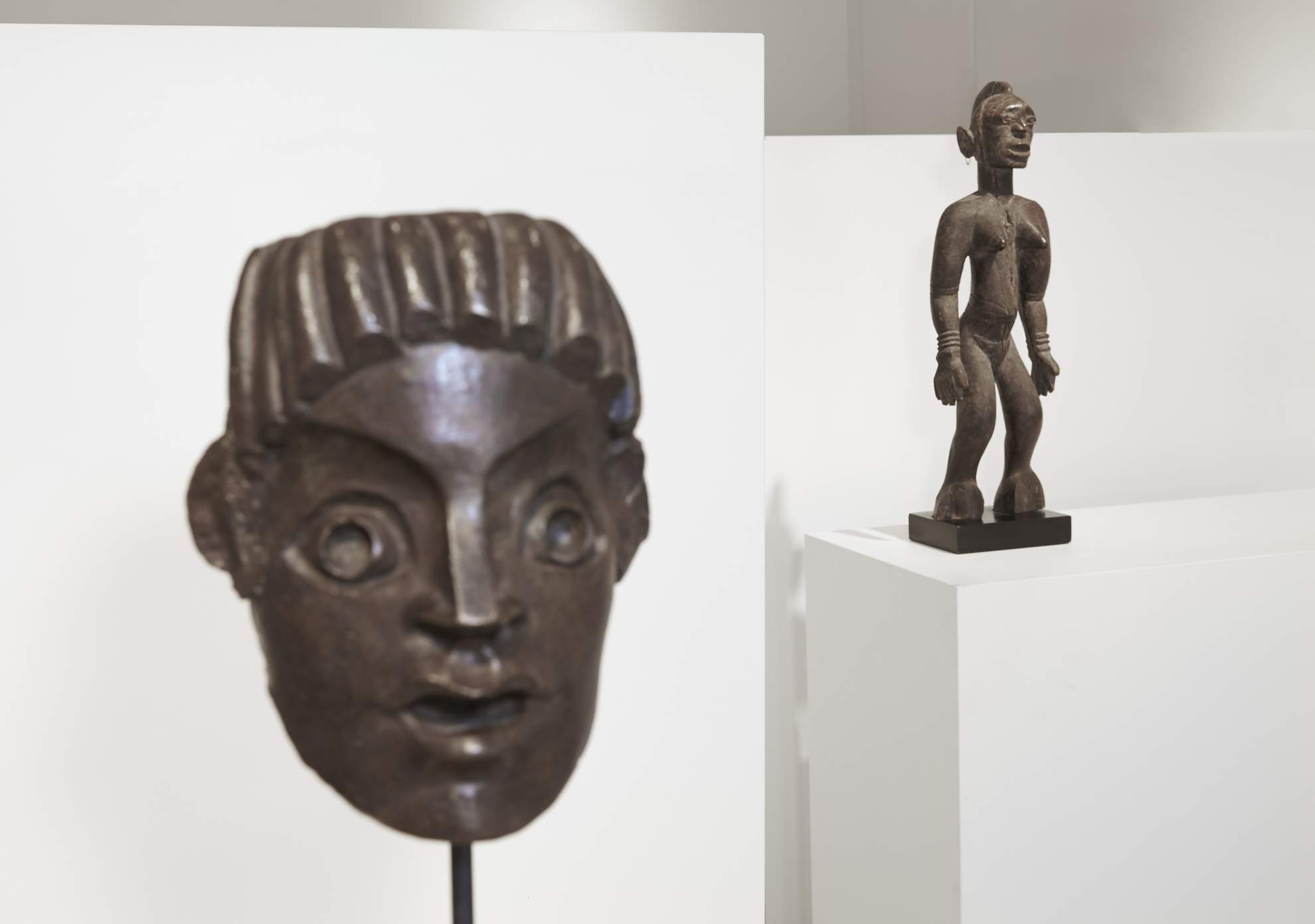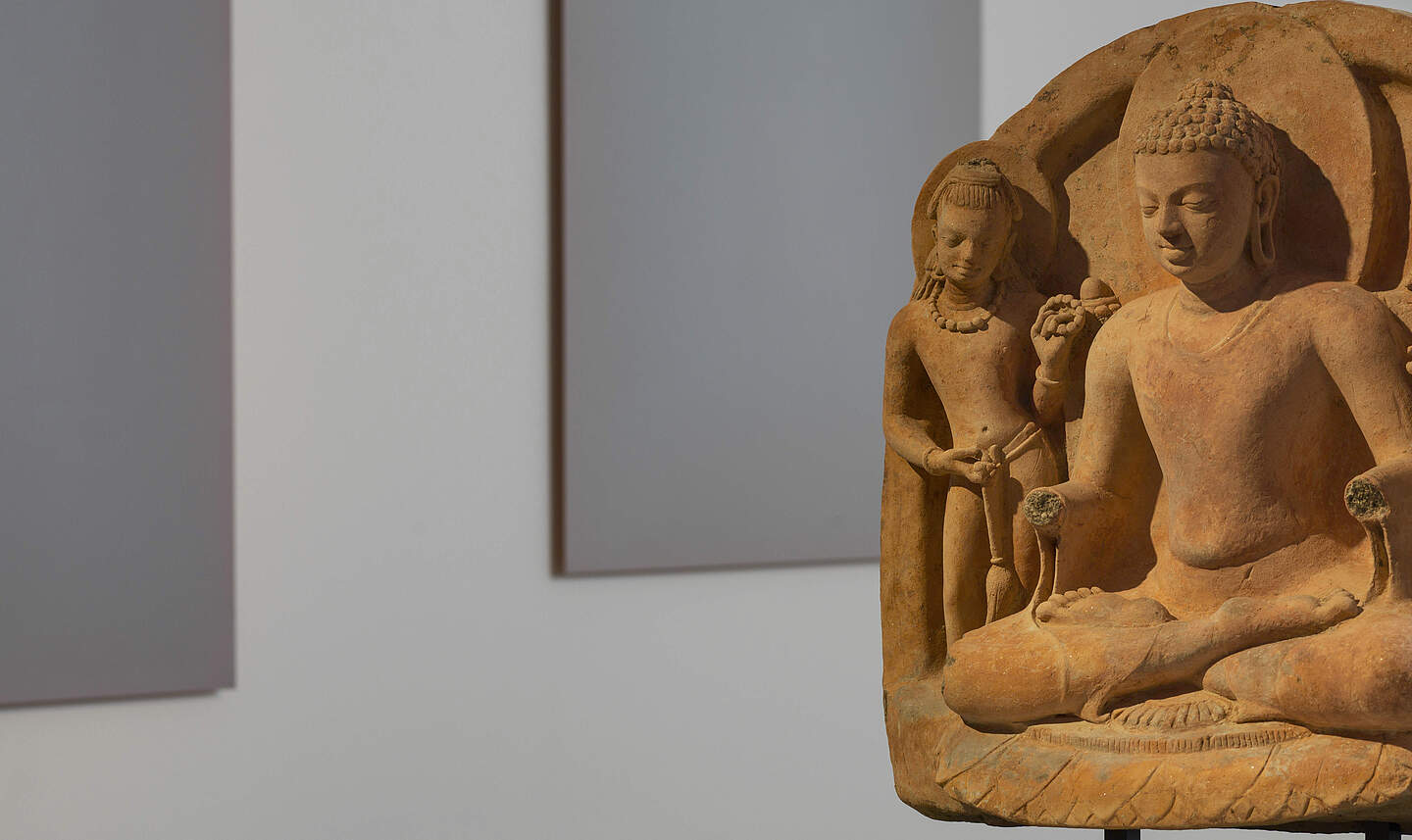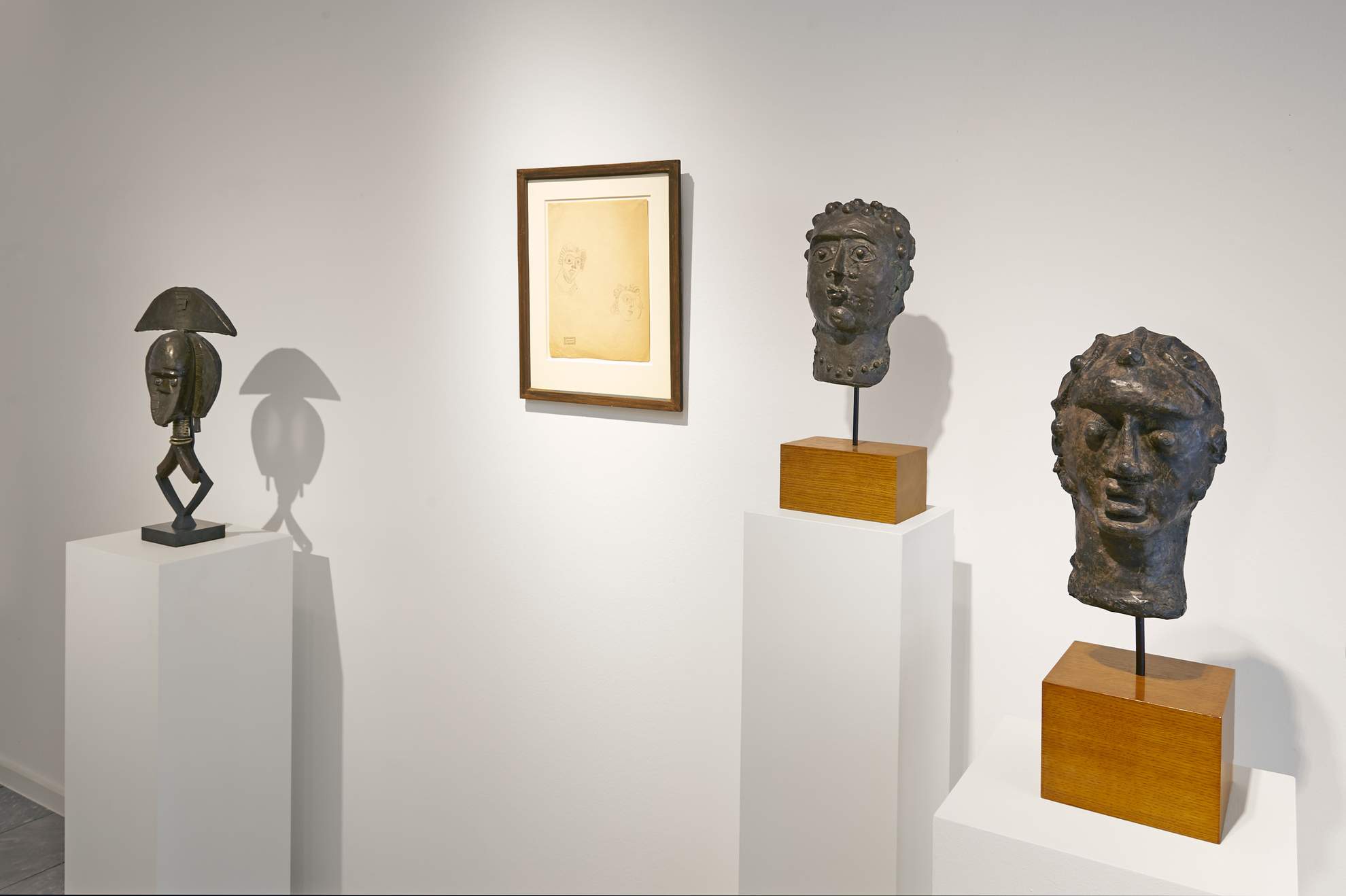
André Derain – Tête-à-Tête
Zurich
At the end of August, Galerie Dierking returns from the summer break with an extraordinary exhibition. André Derain - Tête-à-Tête shows the artist's posthumously cast, often theatrical and sometimes grotesque bronze heads and masks in combination with African and Oceanic masks and figures. The French artist André Derain (1880 - 1954) is best known for his painterly work and his attribution to the Fauves. Always in search of his own language of form, he was long regarded as idiosyncratic. Nevertheless, not only Alberto Giacometto was deeply moved by his work, but also Guillaume Apollinaire, Amadeo Modigliani and, looking back, George Braque were impressed and inspired by his work.
He himself saw the formal
language of African sculptures
as a possible impetus to
break the circle in which
the realists had included us
quoted after Sutton 1959
The Musée d'Art Moderne in Paris dedicated a retrospective to Derain in 1954 after his death. Only then the artist and stage designer, who had clearly distanced himself from the cubism of Picasso and Braque, gained the interest of a wider public. Important collectors such as the Swiss Hermann and Margit Rupf, the American Albert C. Barnes and the Russian Sergei Shchukin got interested in his works. Derain's underestimated sculptural oeuvre, which in his late work can be considered almost autonomous from his painting, began in 1906 in stone and wood.
During the First World War, he made his sculptures and masks from sheet metal, which he partly extracted from used cartridge cases. However, with a few exceptions, it was not until 1938, after a long interruption, that he began sculptural work in terracotta. Whether myth or not, the decisive factor is said to have been a tree in the artist's garden, uprooted by a thunderstorm, under which Derain had found clay. It is these terracotta heads and masks that were cast in bronze with the permission of his wife Alice in the early 1960s in a Ticino foundry in Mendrisio, with an edition of between 15 and a maximum of 20 pieces.
Derain, who in 1905/1906 bought his friend Maurice de Vlaminck's first African work of art (Fang Mask) and who studied prehistoric and non-European art in the Paris museums with great interest, was himself a collector of Etruscan, African and pre-Columbian objects. The impressions he gained from studying such works were translated into his archaic-looking figure heads. He himself saw the formal language of African sculptures as a possible impetus to break the circle in which the realists had included us (quoted after Sutton 1959). With a selection of 12 bronze faces and two works on paper as well as various masks from Africa and the South Seas, Galerie Dierking is showing for the first time a direct juxtaposition of these sources of inspiration and Derain's own artistic realisation from which a new language of form emerged.
André Derain – Tête-à-Tête
Zurich
He himself saw the formal
language of African sculptures
as a possible impetus to
break the circle in which
the realists had included us
quoted after Sutton 1959
At the end of August, Galerie Dierking returns from the summer break with an extraordinary exhibition. André Derain - Tête-à-Tête shows the artist's posthumously cast, often theatrical and sometimes grotesque bronze heads and masks in combination with African and Oceanic masks and figures. The French artist André Derain (1880 - 1954) is best known for his painterly work and his attribution to the Fauves. Always in search of his own language of form, he was long regarded as idiosyncratic. Nevertheless, not only Alberto Giacometto was deeply moved by his work, but also Guillaume Apollinaire, Amadeo Modigliani and, looking back, George Braque were impressed and inspired by his work.
The Musée d'Art Moderne in Paris dedicated a retrospective to Derain in 1954 after his death. Only then the artist and stage designer, who had clearly distanced himself from the cubism of Picasso and Braque, gained the interest of a wider public. Important collectors such as the Swiss Hermann and Margit Rupf, the American Albert C. Barnes and the Russian Sergei Shchukin got interested in his works. Derain's underestimated sculptural oeuvre, which in his late work can be considered almost autonomous from his painting, began in 1906 in stone and wood.
During the First World War, he made his sculptures and masks from sheet metal, which he partly extracted from used cartridge cases. However, with a few exceptions, it was not until 1938, after a long interruption, that he began sculptural work in terracotta. Whether myth or not, the decisive factor is said to have been a tree in the artist's garden, uprooted by a thunderstorm, under which Derain had found clay. It is these terracotta heads and masks that were cast in bronze with the permission of his wife Alice in the early 1960s in a Ticino foundry in Mendrisio, with an edition of between 15 and a maximum of 20 pieces.
Derain, who in 1905/1906 bought his friend Maurice de Vlaminck's first African work of art (Fang Mask) and who studied prehistoric and non-European art in the Paris museums with great interest, was himself a collector of Etruscan, African and pre-Columbian objects. The impressions he gained from studying such works were translated into his archaic-looking figure heads. He himself saw the formal language of African sculptures as a possible impetus to break the circle in which the realists had included us (quoted after Sutton 1959). With a selection of 12 bronze faces and two works on paper as well as various masks from Africa and the South Seas, Galerie Dierking is showing for the first time a direct juxtaposition of these sources of inspiration and Derain's own artistic realisation from which a new language of form emerged.
IMPRINT
© DIERKING 2025


